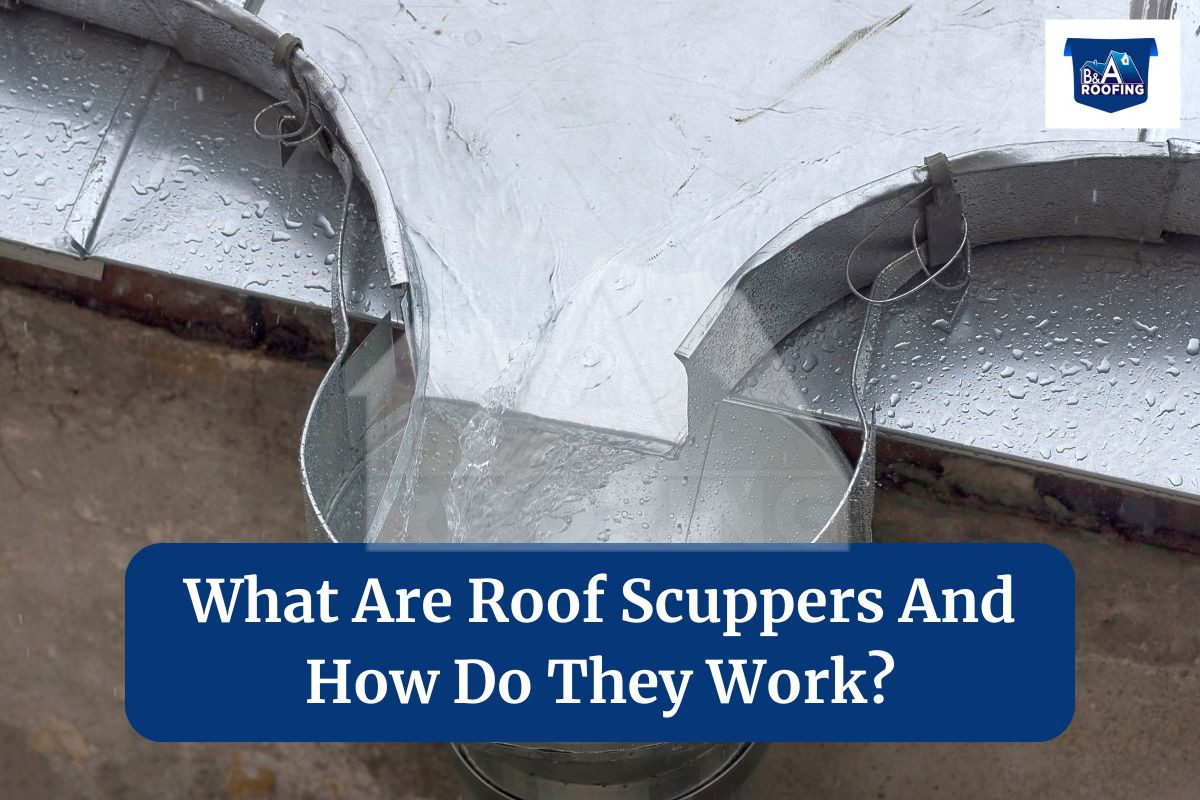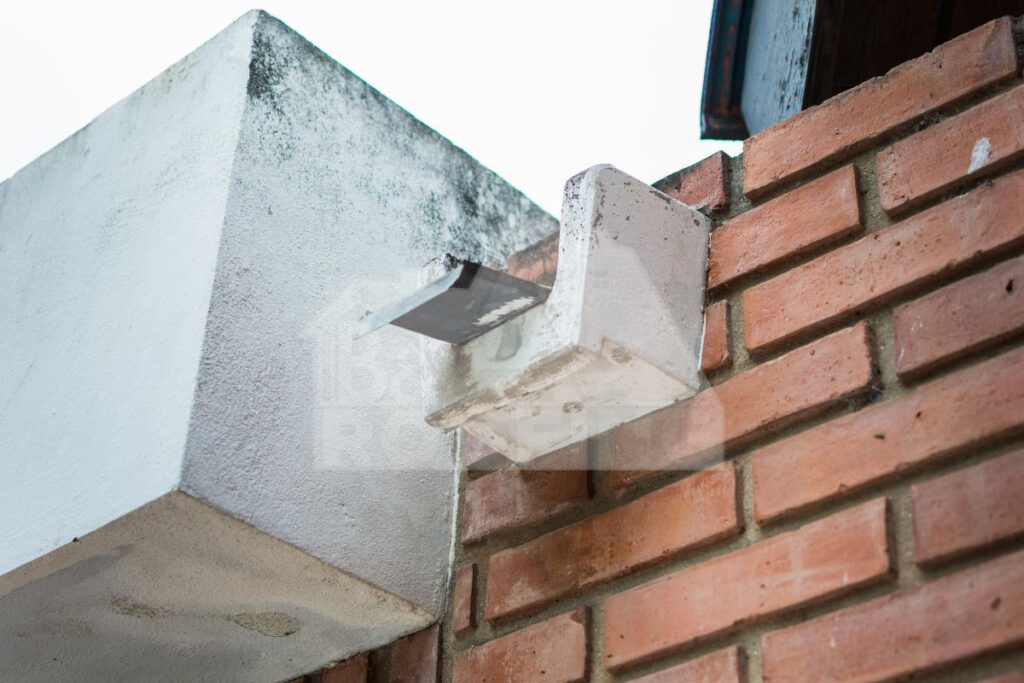Instant Roof Quote
 ×
×
South MS: (601) 520-3183
North MS: (662) 636-7663
North AL: (256) 692-5527
Meridian, MS: (601) 841-3218
Do You Need To File An Insurance Claim
Posted on June 27, 2024

Unlike sloped roofs, flat roofs can’t rely on gravity to help with water drainage. This problem leads to the need for other methods and techniques for proper flat roof drainage. Therefore, other types of water drainage systems have been developed over the years to drain the water from flat roofs. One of these methods utilizes roof scuppers. Roof scuppers are uniquely designed and built to effectively drain water off flat roofs and prevent ponding.
Unlike sloped roofs, flat roofs don’t naturally shed water as efficiently, making a well-designed drainage system critical. Contrary to their name, these roofs are not totally flat and are instead designed with a slight pitch, usually about 1/4 inch per foot, to direct water toward the drainage system.
For this reason alone, several drainage solutions are employed to manage water effectively on flat roofs. Without them, water may sit on the roof for long periods of time, called ponding water, which slowly damages the roofing material and leads to leaks.

So, what are roof scuppers, and what makes them an important part of flat roof drainage? In broader terms, roof scuppers are drainage systems specifically designed for flat roofs. They are openings often located at the edge of the roof or along parapet walls if the flat roof has one. Unlike traditional flat roof drains that rely on internal pipes, scuppers are external and carry water off the roof and into a downspout. The primary purpose of roof scuppers is to allow water to escape the flat roof rather than pool and cause damage.
Many types of roof scuppers can be installed on flat roofs. They come in various designs and can be made from different materials like metal or plastic, each serving a specific purpose and fitting different aesthetic preferences.
Roof scuppers are available in several designs, each tailored for different situations. Understanding the different types can help you choose the right one for your building. Let’s explore the most common varieties:
Through-wall scuppers are perhaps the most straightforward. True to their name, these are particularly holes cut through the walls of a roof parapet, fitted with a liner to direct water away from the building. Generally placed a few inches above the roof deck, they allow water to flow out before it reaches damaging levels. Through-wall scuppers are excellent for guiding water far away from the building’s base, preventing foundation erosion that may occur otherwise.
Channel-type roof scuppers are an innovative and effective solution. They are specialized drainage systems designed to handle large volumes of water on flat roofs. Unlike through-wall scuppers, which simply provide an opening for water to escape, channel-type scuppers include a channel or trough that collects and directs water more efficiently to a downspout. These scuppers are often integrated into the roof’s edge or parapet wall, providing a seamless and effective drainage solution.
Also Read: How Long Does A Flat Roof Last In Mississippi?
When it rains, the water naturally flows towards the edges of a flat roof since they aren’t entirely flat. That’s where scuppers come in, as they catch the water and direct it away from the building, preventing any pooling that could cause damage. To make them even more effective, scuppers are often used in combination with downspouts, splash blocks, or gutters to guide the water further away from the building. This combination provides a comprehensive solution to managing water on flat roofs, protecting the building and the surrounding landscape. But, depending on your roof size and roofing needs, you need to pick the right type of roof scupper for better water drainage.
Implementing roof scuppers offers several significant advantages. Let’s dive into the key benefits that make them an excellent choice for flat roof water management:
We’ve already mentioned how great roof scuppers are at managing water. But without correctly installed scuppers, flat roofs will always remain susceptible to water leaks because water tends to pool on their surface. By providing a direct pathway for water to leave the roof, they prevent the common issues associated with standing water, such as leaks, structural damage, and roof discoloration. Whether you’re dealing with a commercial roof or a residential one, scuppers ensure the proper water drainage from the building’s roof.
Roof scuppers are a cost-effective option for effective roof drainage. They are easy to install and maintain, making them a budget-friendly choice compared to complex internal drainage systems. Plus, their simplicity means fewer chances of issues, which can help save on long-term maintenance costs.
Roof scuppers can be designed to blend seamlessly with the architectural style of your building. Whether you prefer a modern look or something more traditional, there are scupper designs to match. Their unobtrusive presence means they won’t take away from the building’s appearance while still performing a crucial function.
Unlike internal drainage systems that can easily get clogged and need frequent cleaning, scuppers are less likely to get blocked. All you really need to do is inspect them regularly and clear any debris occasionally to keep them working at their best. Like gutters, you can also get larger-sized scuppers as well to handle overflows of water.
Roof scuppers might not be the most exciting thing to talk about, but they’re super important for managing water effectively on a flat roof. Whether you want to prevent water damage or cut down on maintenance costs, these seemingly simple features have a big impact on both homes and businesses. Whether you’ve got a flat roof on a home or a big commercial building, knowing what roof scuppers are and how they can benefit your roof can really make a difference in the longevity and durability of your roof for years to come.
The issue of ponding water or slow drainage is a common issue on flat roofs. Most commercial building owners often face these types of damage caused by ponding water. If you are also facing problems with the drainage system on your flat roof, now is the time to take the right form of action.
Contact the expert roofers at B&A Roofing In Hattiesburg, MS, for your commercial roofing needs. The roofers at our company are skilled at handling any commercial roofing project, be it a new roof installation, replacement, or commercial roof repair. We also provide gutter and home renovation services to property owners in Mississippi. If you are also looking for commercial roofing services in Hattiesburg, MS, or the surrounding area, contact us today. Give us a call at (601) 520-3183 and consult with a roofing professional.
Don’t see your location? Call us! We Likelt serve your area too